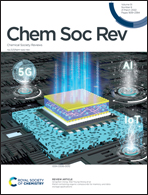Multicomponent reactions and photo/electrochemistry join forces: atom economy meets energy efficiency
Abstract
Visible-light photoredox catalysis has been regarded as an extremely powerful tool in organic chemistry, bringing the spotlight back to radical processes. The versatility of photocatalyzed reactions has already been demonstrated to be effective in providing alternative routes for cross-coupling as well as multicomponent reactions. The photocatalyst allows the generation of high-energy intermediates through light irradiation rather than using highly reactive reagents or harsh reaction conditions. In a similar vein, organic electrochemistry has experienced a fruitful renaissance as a tool for generating reactive intermediates without the need for any catalyst. Such milder approaches pose the basis toward higher selectivity and broader applicability. In photocatalyzed and electrochemical multicomponent reactions, the generation of the radical species acts as a starter of the cascade of events. This allows for diverse reactivity and the use of reagents is usually not covered by classical methods. Owing to the availability of cheaper and more standardized photo- and electrochemical reactors, as well as easily scalable flow-setups, it is not surprising that these two fields have become areas of increased research interest. Keeping these in view, this review is aimed at providing an overview of the synthetic approaches in the design of MCRs involving photoredox catalysis and/or electrochemical activation as a crucial step with particular focus on the choice of the difunctionalized reagent.



 Please wait while we load your content...
Please wait while we load your content...